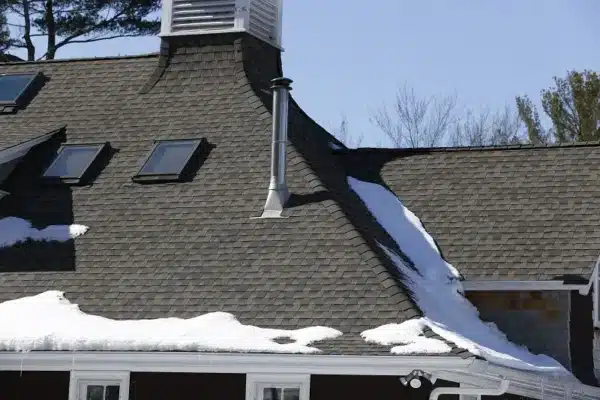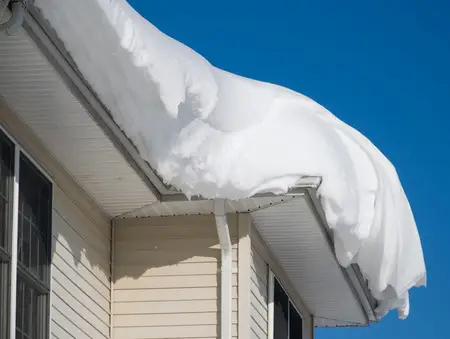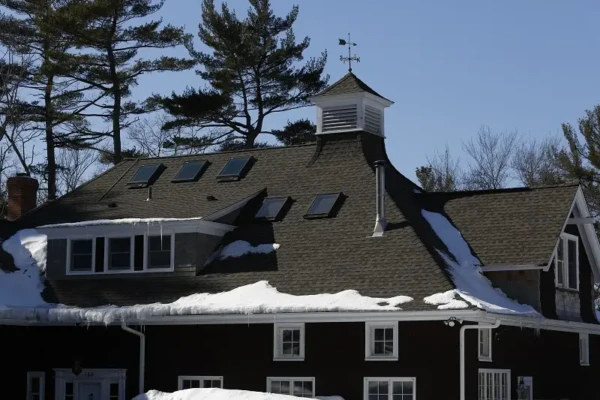Worry-Free Winter Installation: Replace Your Roof In Winter Guide

Did you know we install all winter long?
Winter, Schminter! We have our Winter Worry-Free Installation Program for full peace of mind.
Many New England homeowners are in need of new efficient windows, siding, roofing and entry doors due to old products, drafts, leaks and high energy bills. With the increase of National Grid spike of over 108% since last fall, it’s no wonder why you are in need and need to act now.
We want to let you know that that winter is a great time to replace inefficient exterior products that cause energy bills to skyrocket!
Winter doesn’t mean you need to put off your home improvement projects until spring. We are trained to work in ALL weather and understand your concerns/ hence we enhanced our Winter Worry-Free Installation Program
No more worries about feeling stuck with those drafty windows, old leaky roof, cracked inefficient siding and high energy bills waiting until Spring. Winter-Schminter-you got nothing on Coastal!
With our Winter Worry-Free Installation Program you’ll have peace of mind knowing that our installers work quickly without losing quality or craftsmanship. Meanwhile, we prep your home for minimal heat loss during the installation process.
With Old Man Winter here in full force, you may be noticing some issues with your current roofing system. From missing shingles to ceiling leaks, you might just now be realizing that you need to replace that roof—even though we’re smack dab in the middle of winter.
Can You Replace a Roof in the Winter?
But can you replace a roof in the winter? This is a great question that we get every year from New England homeowners. The fact is that yes, you CAN replace your roof in the winter, but it’s important to use a proper technique from start to finish. This way you can ensure that your roof performs at peak condition every season.
These are the best techniques that professional roofing contractors use for winter roof installation:
What’s the Best Temperature for Roof Installation?
In an ideal world, asphalt roof shingles should be installed between 40 degrees and 85 degrees Fahrenheit. Even high-quality asphalt shingles can crack when hammered, and installing in the wrong temperature can promote breakage. This is one of the biggest problems when you install asphalt shingles when it’s under 40 degrees.
With that said, winter is often a great time to get a good deal on a new roof, but your roofing contractor will need to wait until the temperature is in the right range before scheduling an installation date.
Top Troubles of Roofing Installation in the Winter

Aside from asphalt shingles becoming brittle in winter, there’s another key reason to wait for the right temperature. Specifically, it’s all about adhesive! When temperatures drop below 40 degrees, some self-adhesive shingles struggle to stick properly.
The sealing strips usually bond well in spring and summer. However, in winter, we must wait for warmer temperatures.
If you choose another type of roofing aside from asphalt, you’re not necessarily out of the woods. Fiberglass shingles are very susceptible to fracturing in the winter, and shakes can also break apart as temperatures approach the freezing mark.
How Can You Replace a Roof in the Winter?
Despite several challenges winter roofing brings, you can still replace your roof during this season. Moreover, roofing companies often offer the best deals as business slows down.
In addition, professional roofing contractors use numerous techniques to ensure cold temperatures don’t impact your new roof.
Keeping Your Roofing Shingles Warm
One of the first steps is to make sure the roofing shingles are warm before they’re installed. This is as simple as storing them in a heated garage or warehouse before delivering to the homeowner.
Properly Sealing the Shingles
In addition to keeping shingles warm, it’s important to use the proper sealing technique in winter. Most roofing shingles have thermally-activated asphalt sealant. This sealant bonds shingles to the roof with sunlight, and it can take up to a couple of weeks for a complete bond.
The approach is a bit different in the winter, where sunlight in New England is a bit scarce. In the wintertime, a professional roofing contractor may choose to hand-seal the shingles with an approved asphalt roofing cement or other adhesives that are provided by the manufacturer. Every tab should be sealed with one or two dabs (roughly 1-inch in diameter) of asphalt roofing cement. The cement should be near the shingle’s edges but never exposed.
Rakes and eaves are two of the most susceptible areas for wind-blowing shingles off the roof. Use a lot of care in this area and be sure that each shingle has the proper amount of sealant for best results.

What About Winter Roof Maintenance?
Even if you don’t intend to replace your entire roof this winter, your roof may still require maintenance. Be very careful when you walk over shingles in cold weather, since your foot can easily break them—especially if the shingles lie on an uneven surface or curve slightly.
Activity on your roof may also break the sealant bond on the shingles, so prepare to hand-seal shingles that peel away from your roof.
For professional winter roof installation or questions about your roof, contact Stephanie Vanderbilt today at svanderbilt@mycoastalwindows.com or by calling 978-304-0495.





